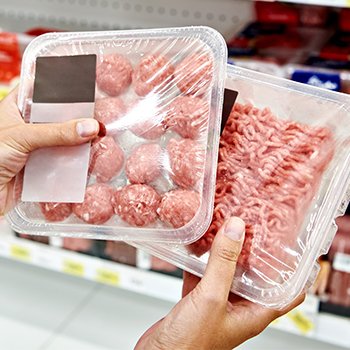คัดสรรส่วนผสมจากธรรมชาติสำหรับผลิตภัณฑ์เนื้อสัตว์ฉลากสะอาด Selection of Natural Ingredients for Clean Label Meat Products
1738 Views |

คัดสรรส่วนผสมจากธรรมชาติสำหรับผลิตภัณฑ์เนื้อสัตว์ฉลากสะอาด Selection of Natural Ingredients for Clean Label Meat Products
Translated and Compiled By: รวิพร พลพืช
Rawiporn Polpued
Senior Writer
Food Focus Thailand Magazine
editor@foodfocusthailand.com
หากจะนิยามแนวคิด “ฉลากสะอาด” นั้น อาจจะมีคำจำกัดความที่แตกต่างกันไปในแต่ละอุตสาหกรรม โดยทั่วไป ผลิตภัณฑ์ฉลากสะอาดจะเกี่ยวข้องกับอาหารที่ไม่มีการเติมวัตถุเจือปน สารปรุงแต่งกลิ่นรส และสารกันเสีย ซึ่งสามารถแทนที่ส่วนผสมเหล่านี้ได้ด้วยวัตถุดิบที่มาจากธรรมชาติ เนื่องจากความต้องการอาหารเพื่อสุขภาพของผู้บริโภคเพิ่มมากขึ้น ประกอบกับกระแสการลดการบริโภคอาหารที่มีเกลือ น้ำตาล และไขมันสูงกำลังได้รับความสนใจเช่นเดียวกัน โดยเฉพาะในกลุ่มอุตสาหกรรมเนื้อสัตว์ที่ได้รับผลกระทบจากประเด็นนี้มากเป็นพิเศษ โดยผู้บริโภคส่วนใหญ่มักมีทัศนคติและความรู้สึกในเชิงลบที่ว่า การบริโภคเนื้อสัตว์แปรรูปอาจก่อให้เกิดความเสี่ยงต่อโรคหลายชนิด ดังนั้น การคัดสรรส่วนผสมจากธรรมชาติเพื่อทดแทนการใช้สารสังเคราะห์ จึงเป็นแนวทางสำคัญในการพัฒนาอาหารให้มีความปลอดภัยและดีต่อสุขภาพในระยะยาว โดยวัตถุดิบจากธรรมชาติที่สามารถทดแทนส่วนผสมดั้งเดิมในผลิตภัณฑ์เนื้อสัตว์แปรรูป มีดังต่อไปนี้
1. ไฮโดรคอลลอยด์
ไฮโดรคอลลอยด์ ถือเป็นส่วนผสมที่นิยมใช้ในอุตสาหกรรมอาหาร เนื่องจากมีคุณสมบัติโดดเด่นในการปรับปรุงสูตรอาหารหลายประการ อาทิ ใช้เป็นสารก่อเจล สารให้ความข้นหนืด และสารให้ความคงตัว รวมถึงยังเป็นแหล่งของใยอาหารจากธรรมชาติที่ดีอีกด้วย การประยุกต์ใช้ไฮโดรคอลลอยด์เพื่อพัฒนาเป็นผลิตภัณฑ์ฉลากสะอาดสำหรับเนื้อสัตว์แปรรูปและเนื้อสัตว์ทางเลือกจากพืชนั้น สามารถช่วยปรับปรุงคุณสมบัติในการอุ้มน้ำ เนื้อสัมผัส และความคงตัวของระบบอิมัลชัน จึงมีส่วนสำคัญในการช่วยลดปริมาณการเติมไขมัน เกลือ และฟอสเฟตในผลิตภัณฑ์เนื้อสัตว์แปรรูปได้
2. วัตถุดิบจากธรรมชาติทดแทนเกลือและฟอสเฟต
แนวทางการลดเกลือในผลิตภัณฑ์เนื้อสัตว์แปรรูปฉลากสะอาดนั้น สามารถพัฒนาได้หลากหลายรูปแบบ ตัวอย่างเช่น การเติมผงเห็ด (Agaricus bisporus หรือ Pleurotus ostreatus) ร้อยละ 2.5 สามารถลดปริมาณเกลือในแพตตี้เนื้อได้กว่าร้อยละ 50 อีกทั้งยังให้คุณสมบัติทางประสาทสัมผัสที่ยอมรับได้ รวมถึงการใช้สาหร่ายทะเลชนิดต่างๆ ที่อุดมไปด้วยแร่ธาตุ เช่น วากาเมะหรือโนริ ซึ่งช่วยทำหน้าที่เสริมกลิ่นรสโดยรวมในผลิตภัณฑ์เนื้อสัตว์แปรรูปที่ถูกลดเกลือและไขมันลงอีกด้วย
3. สารต้านอนุมูลอิสระและสารต้านจุลินทรีย์
การเกิดปฏิกิริยาออกซิเดชันของไขมัน การเจริญเติบโตของจุลินทรีย์ และการสลายตัวของเอนไซม์ ล้วนเป็นสาเหตุหลักของการเน่าเสียในผลิตภัณฑ์เนื้อสัตว์ โดยวิธีหนึ่งในการลดหรือยับยั้งการเกิดปฏิกิริยาดังกล่าว คือ การใช้สารต้านอนุมูลอิสระ เพื่อช่วยรักษาคุณภาพและยืดอายุการเก็บรักษา ซึ่งสารต้านอนุมูลอิสระจากธรรมชาติที่นิยมใช้มักจะเป็นสารประกอบในกลุ่มฟีนอล ได้แก่ กรดฟีนอลิก โทโคฟีรอล และฟลาโวนอยด์
The definition of a “clean label” differs from industry to industry. Generally, a clean label for a food product is associated with the formulation without additives, flavors, and preservatives, which can be replaced with natural substances. The demand for healthy food has been growing among consumers, and the trend of reducing salt, sugar, and fat consumption has been gaining attention, significantly affecting the meat industry. Consumers have negative attitudes and feelings that consuming processed meat may cause a risk of several diseases. Therefore, choosing natural ingredients instead of synthetic substances is an important guideline for developing alternative food that is safe and suitable for long-term health. The natural ingredients that can be used to replace the original ones in processed meat products are shown as follows:
1. Hydrocolloids
Hydrocolloid is a popular ingredient used in the food industry because it has several outstanding properties for improving food recipes, including gelling agents, thickeners, and stabilizers. Hydrocolloid is also a good source of natural dietary fiber. Applying hydrocolloids to develop clean-label processed meat and plant-based meat can improve the water-holding capacity, texture properties, and stability of the emulsion system. Therefore, hydrocolloid plays a vital role in reducing the amount of fat, salt, and phosphate addition in processed meat products.
2. Natural fat and phosphate replacer
There are several approac hes to reducing salt in processed meat to develop a clean-label product. For example, adding mushroom powder (Agaricus bisporus or Pleurotus ostreatus) at 2.5% can reduce salt content in beef patties by more than 50% with still acceptable sensory properties. Using seaweed containing high minerals like wakame or nori can enhance the overall flavor in reduced salt and fat processed meats.
3. Antioxidant and antimicrobial
Lipid oxidation, microbial growth, and enzymatic degradation are the leading causes of meat product spoilage. Using antioxidants is one of the methods to maintain quality and extend shelf-life. The most natural antioxidants commonly used are phenolic compounds, including phenolic acid, tocopherols, and flavonoids.






